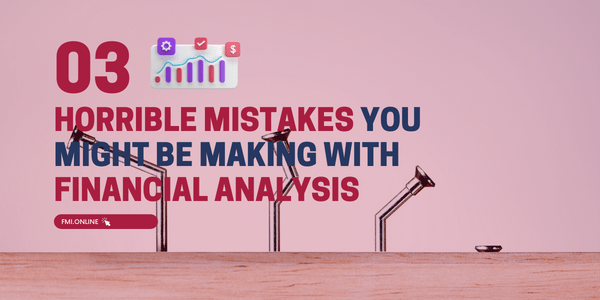Financial analysis is a significant part of all investment banking deals. It refers to the process undertaken to analyse and evaluate projects, companies, or other financial transactions based on their returns, performance, and suitability to the investment bank.
Financial analysts have to use multiple analysis techniques like fundamental and trend analysis to derive their conclusions. So being thorough with these concepts and having the right analytical and problem-solving skills is key for this role. Any errors made during a financial analysis process can cost an investment bank massive resources. Here are 3 major mistakes to avoid while conducting financial analysis:
1. Ignoring footnotes in financial statements
This is a common mistake that many financial analysts commit during financial analysis. However, you must rectify this mistake. Footnotes contain vital information about how the company has calculated and arrived at the values given in the statement.
Footnotes often contain numerical values. It is a good practice for financial analysts to compute these values in the calculations given above and check if everything still matches and makes sense. Sometimes companies use footnotes to hide the inconsistencies and distortions they have made in their financial statements.
If you get into the habit of reading and evaluating footnotes with the same effort as the rest of the statement, you will surely see positive results. Your understanding of the company’s financials will be better and in the end, you will be able to deliver a better deal. Moreover, by paying attention to these details, you will be able to set yourself apart from your colleagues.
2. Analysing financial statements from a third-party provider
This is a common practice in the financial analysis field and not a good one at that! Most financial analysts, especially beginners, use third-party sources to source financial statements of companies. These third-party sources include Yahoo, Bloomberg, Ticker, etc.
The issue with analysing financial statements from these sources is that they have pre-made templates for all types of financial statements. They then mold the statements published by the companies to fit these templates. They do not make numerical changes. They do, however, make changes in how the data is arranged and how much importance is allotted to each field of data.
Third-party sources do this to ensure comparability. A common investor wants to be able to compare multiple companies and their financials seamlessly and having templates helps with that. But financial analysts need to dive deeper than that.
To do so, they must use the financial statements authentically published by the companies. These tools follow the standard format and present information as it is. By evaluating and analysing the information in unedited statements, a credible financial analyst will be able to follow the narrative created by the company. This will help the financial analyst check the quantitative data against the qualitative and see if the story of the company checks out in a larger context.
3. Not taking adjustments into account
This is a huge no-no! There are many adjustments that a financial analyst must make will analysing the numbers given and calculating for their desired criteria. If these corrections are not made, the results can be inaccurate and incomplete.
Entries like write-offs, one-time data, deferred revenues, etc. must be adjusted. If these are not taken into account, the financial picture and health of a company may become distorted. So, make sure you change the statements by incorporating these adjustments.
CONCLUSION:
We have discussed the common mistakes financial analysts make during their analysis. But there is a way to avoid these mistakes and ensure your results are accurate. This can be through solidifying basic foundational knowledge and skills.
You can try out this course by FMI on global financial analysis. It will help you learn or revise all types of analyses and ensure your knowledge is up to date with the global market. You can also take a quiz at the end of the course to test your skills! It is a helpful course for aspiring financial analysts, already working financial analysts, and anyone else who might want to do a thorough analysis of companies or projects.












 60+ hours
60+ hours 9 courses
9 courses



